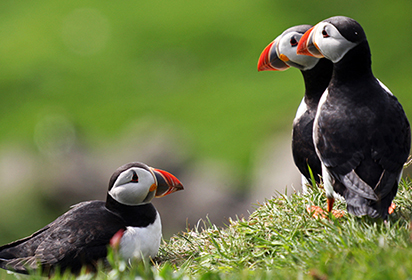Written by James Proctor
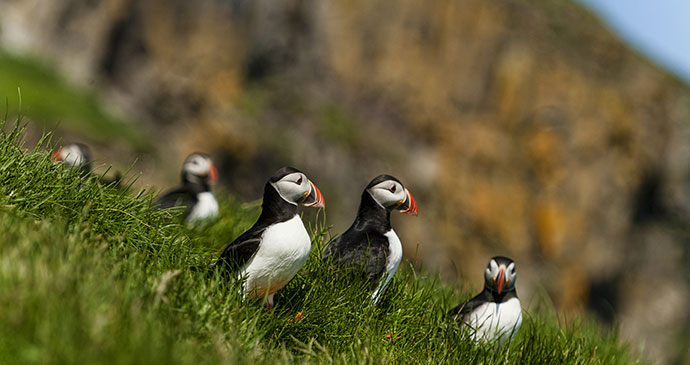
It’s estimated that there are two million pairs of seabirds in the Faroe Islands during the breeding season, which is unmistakably the best time to watch birds in the islands. Simply find yourself a suitable cliff, sit down, remain quiet and watch and smell the spectacle: a cliff face populated by hundreds of thousands of seabirds is not only an audio-visual delight, but also one that won’t fail to leave your nose unstimulated either. Puffins, guillemots, kittiwakes, razorbills, terns and gannets all come to breed on the archipelago, and here are our top places to spot them.
Vestmanna bird cliffs
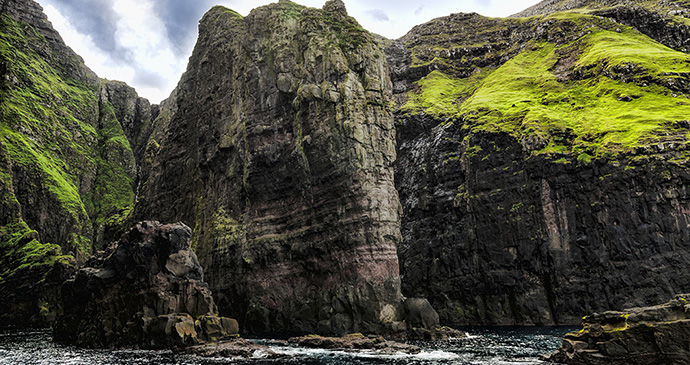
This is one of the best excursions anywhere in the Faroes. These towering cliffs, roughly halfway between Vestmanna and Saksun to the north, provide safe nesting places during the summer months (roughly May until late August) for thousands upon thousands of seabirds, attracted by the vast shoals of fish that gather here in the plankton-rich waters of the North Atlantic. The boats that sail out here give you an unparalleled view of the cliffs and the birds – notably puffins, razorbills and guillemots – as they weave in between the numerous sea stacks and in and out of narrow straits bound by sheer rock walls (look up and you may well see sheep grazing quite undisturbed on the clifftops) and dark echoing grottoes where the sound of the squawking birds and dripping water is amplified to unnerving proportions.
Skugvoy
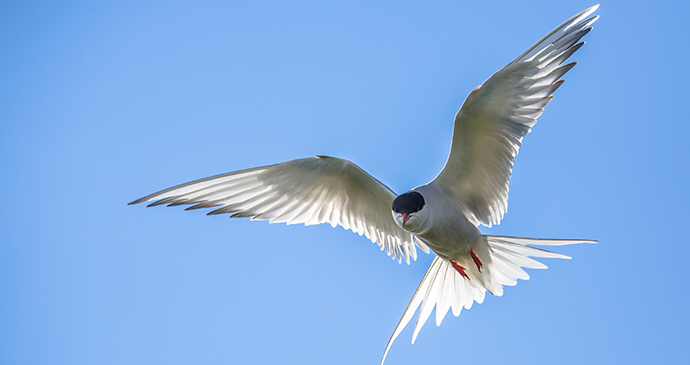
Skugvoy, home to around 20 people, is best known for its rich birdlife – its Faroese name is ‘island of the skuas’. Although many of these birds no longer frequent the island, there are still other large colonies of seabirds on the island’s western cliffs waiting to be discovered. One of the best places to watch birds is around the northern end of the island, where there are large numbers of puffin burrows. Descending from the hilltop towards an area of flat land on the northwest coast, you’ll see the sea cliffs that form the headland, Høvdin (134m), to your right where there are still good numbers of guillemots to be seen. Look out also for cormorants, fulmars and razorbills, which can all be seen here. You’re likely at this point to come under attack from frighteningly large numbers of arctic tern, the pluckiest of all the island’s birds, intent on delivering a sharp blow to the top of your head with their pointed beaks.
Nólsoy
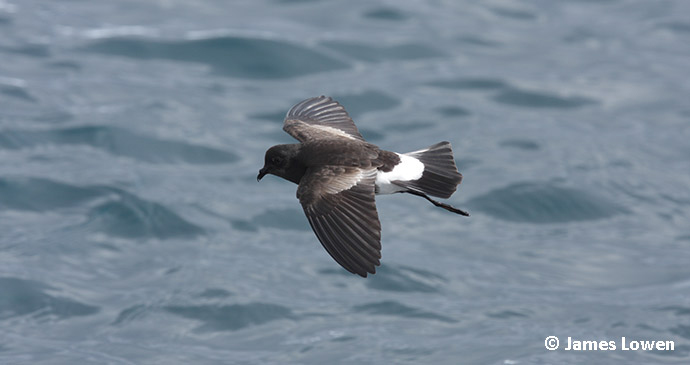
This floating humpbacked finger of land is home to the world’s largest colony of storm petrel on its east coast. Trips to the island can be organised, and offeer a unique chance to see these nocturnal birds lunge through the night sky at truly remarkable speeds as they search for food.
Inspired to book a trip to this Danish island chain? Talk to our friends at Regent Holidays:

Looking to learn more about the Faroe Islands? Check out our comprehensive travel guide:
